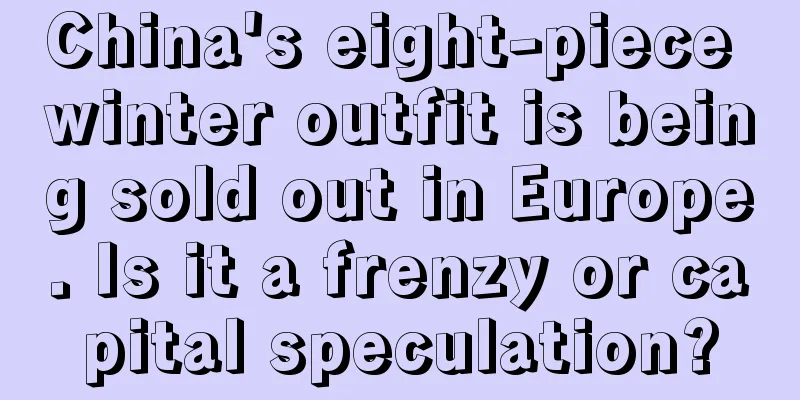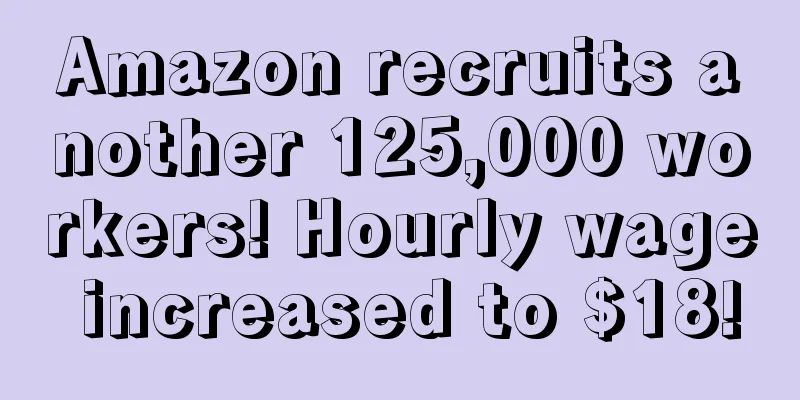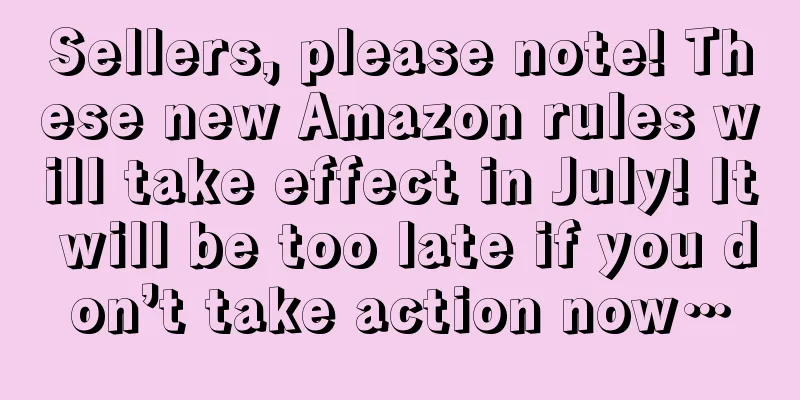"Why do some people say that WOOT promotion is effective, while others say it is not?" - Is the role of WOOT icing on the cake, or is it a timely help?

|
Before starting this topic, let me chat with you guys first. An operations partner once asked me, how come even though Amazon is cracking down so strictly now, we still see sellers walking on the edge of risk? In fact, the essence is that each company has its own business philosophy, and each company's survival strategy is different. Some people follow the platform rules and pursue stability and long-term sustainability; while others believe in "fortune and fortune are sought in danger" and make a firm choice between time cost and risk to "take risks". Of course, no matter how the "thorns" in the category dig, sellers who follow the rules are still the majority, just like the sellers who choose to cooperate with WOOT CN, who use the vicissitudes of life to find the right path. The above is just an introduction to the topic. Today, I would like to discuss with you seller friends why WOOT, as a promotion method, only serves your strategic needs but cannot reverse the results determined by your strategy. I would like to share a few examples with you. A category that has caused most new Chinese white-label sellers to fail This is a high-priced household product category. High market capacity and high unit price are the characteristics of this category, which has attracted many sellers to enter the market. However, this category also reflects the extremely cold and "unfriendly to survival" characteristics of new sellers - the category sellers are monopolistic (Amazon has a high proportion of self-operated products) and have a strong brand effect (even some of the core traffic words in the category are brand words). Currently, there are only a few Chinese third-party sellers who have achieved results - one or two sellers who have achieved a certain ranking with the support of domestic capital and their own technical strength; one seller who can achieve certain sales by differentiating himself from big brands with low prices in the same category, etc. - and they can also gradually build a considerable market share through WOOT. Sellers who are new to this category probably have a similar mentality - "The category is so large, the average order value is so high, and the products provided by the supplier are also innovative to a certain extent, so at least I can just drink the soup while the big brands eat the meat, right?" But the reality is that buyers in this category would rather believe in the high-priced big brands sold by Amazon than choose your white-label products that are slightly cheaper than the big brands. This is reflected in the conversion rate data of the advertisements, which is very ugly. The conversion rate is inherently far lower than that of self-operated products, so it is difficult to obtain the distribution of natural traffic. Therefore, many sellers in this category often return empty-handed. From a higher perspective, it is difficult to be successful in this category if you only use the simple strategy of “selling some goods and making a profit”, because you need to purchase platform traffic for a long time, but it is difficult to get a positive ROI from advertising. So how do the relatively good Chinese sellers mentioned above do it? Take a brand with sufficient R&D and financial strength as an example. From the beginning, they have opened up a gap with ordinary sellers in terms of product overseas strategy. In terms of products, they use their technological advantages to develop products of different levels to meet market demand; in terms of sales, Amazon is just one of the channels to undertake the brand traffic overflow generated by their brand marketing. How can you imagine the efforts and investments they have made in all aspects of online and offline communication, including pre-launch warm-up, post-launch promotion, and heat maintenance during the sales process, in order to get a share of the pie from the big American brands? So, is it because the price per unit of the category is too high and consumers tend to choose big brands, so we need to pay attention to entry strategies, focus more on brand building, and rely more on capital investment, while low-price products do not need to study these? Not entirely. Let’s move on to the next example. 02. A seller who was misled by only looking at the surface data of the market This seller was promoted through WOOT on Qiaotuntun WOOT CN in September. The result is really heartbreaking - even with BD support, the seller's link still achieved a very low conversion rate (2%, when the comments are still good) at a lower price. Let me give you a set of data for comparison. In my previous experience, under normal circumstances, the conversion rate of products priced at 25-30 yuan is about 10-15%; the conversion rate of products priced around 20 yuan can reach 15%-20%; the conversion rate of hot-selling products priced just over 10 yuan is 25% or even 30% (the above data is only a personal summary and no excuses are given). In fact, the outcome was determined from the moment the seller chose to sell this category. In this category, self-operated and branded businesses have a monopoly of nearly 70%, and even the core keyword of this category is the brand name of a big brand, and the link sales distribution gap is very obvious. Even with such extreme data, sellers still resolutely enter the market alone, supported by the assumption that "the market size of the category is very large, and it is not a problem to sell a certain amount of goods." Going back further, it was because the seller was originally engaged in a niche category. When considering how to expand the category to achieve GMV growth, he looked at the data of this category and chose to enter the market. I still remember clearly the seller's heart-breaking question that day, "There are still several thousand stocks left in China, what should I do, should I send them out?" As a WOOT salesperson, I unconsciously said something "outrageous" - why don't you try to sell XX? Finally, let me give you another example. 03. A seller who lost the market because of missing the threshold initiative There was a seller who was the first to discover a certain market demand two years ago. The demand was extremely large, and the seller was also the first to develop products that met this market demand. As shown in the screenshot below, the ABA ranking of the core keywords of this product will be over 30 in 2022, reach 30,000 in 2023, and reach 15,000 in 2024. In the early days, the seller also sold the product at a relatively high price and with high sales volume for quite a long time. However, because the seller did not apply for a patent for the product in a timely manner (or for other reasons), other sellers discovered this market and quickly changed the appearance and went online to compete. The new sellers’ prices soon reached half of or even less than the original price of this seller. What’s more, some even upgraded their products - “giving more and selling cheaper”. When sellers saw that the aggressive competitors were constantly eating into their market share, they thought of using WOOT to promote and reverse the decline. However, since the BD price was still nearly twice that of the competitors who entered the market later and had a certain foundation, the results of BD naturally did not meet the sellers' expectations. This is essentially a strategic reason why the tactics seem "ineffective" - after losing the threshold initiative, if sellers do not face the challenges of competing products (such as facing price competition, or researching product iterations), they will foreseeably gradually lose market share. Finally, let's go back to this question, "Why do some people say that WOOT promotion is effective, while others say it is not?" First of all, WOOT promotion is limited by your category strategy, and your framework has actually determined your upper limit. Secondly, WOOT is a promotion tool, just like your Amazon advertising tool. Today, there must be no seller looking at the dwindling links and questioning sadly , "Why, I have opened Amazon advertising and invested in Longjiang pork trotter rice for three meals a day, but the links are still not booming?!" In essence, WOOT helps you promote in the form of high-frequency BD, which gives the link the possibility to rewrite the "system data" and accumulate more "data recognition" (commonly known as "weight"). So, as a promotion tool, how do we use WOOT? First, we need to determine a clear purpose, and secondly, with appropriate investment and rhythm (I won’t go into details here, there are too many words above, and I will explain it next time. If you are interested in the rhythm method of using WOOT, you can pay attention to Qiaotuntun’s live broadcast every Thursday night) . In recent years, it is not difficult to find that product differentiation is indeed becoming more and more difficult. The future competition in cross-border e-commerce may indeed be a contest of financial strength and strategic advantages and disadvantages. |
Recommend
UK online retail sales fell 12% in December! Demand for appliances, home and garden categories slowed!
It is learned that according to foreign media repo...
It’s all tricks! Summary of Amazon’s daily operation skills
This article mainly shares some sales skills and ...
New ways to advertise on Amazon! Have you used all these features?
As a global e-commerce giant, Amazon is always &qu...
Big event of the week! Former Amazon executive: The platform chose counterfeit goods
Amazon launches free online music service US e-co...
Research Amazon keywords and avoid these "minefields"
Amazon has created an unparalleled shopping experi...
What is EasyTax? EasyTax Review
Shenzhen Easy-Tax Services Center is a company tha...
New changes in Amazon search, changing the matching mechanism again?
01 Amazon changes its matching mechanism? Has Ama...
Off-site deal operation strategy
Image source: 123rf.com.cn After I posted an artic...
What is MyDeal.com.au? MyDeal.com.au Review
MyDeal.com.au is an Australian online marketplace ...
What is AB Tasty? AB Tasty Review
AB Tasty is a conversion rate optimization softwar...
Amazon Notice! US stores also need to upload French tax numbers?
Due to the recent outbreak of the epidemic in Ita...
Etsy's second quarter revenue exceeded $620 million, with 91 million active buyers
It is learned that according to foreign media repo...
Amazon increases sellers' warehouse configuration service fees
Amazon has made a number of adjustments to logisti...
What is best deal? Best deal review
A promotion with a time limit. The duration is usu...
[Methodology] How to develop corresponding winning operational strategies by monitoring competitor data?
According to Maomao, Amazon sellers before 2017 ra...









